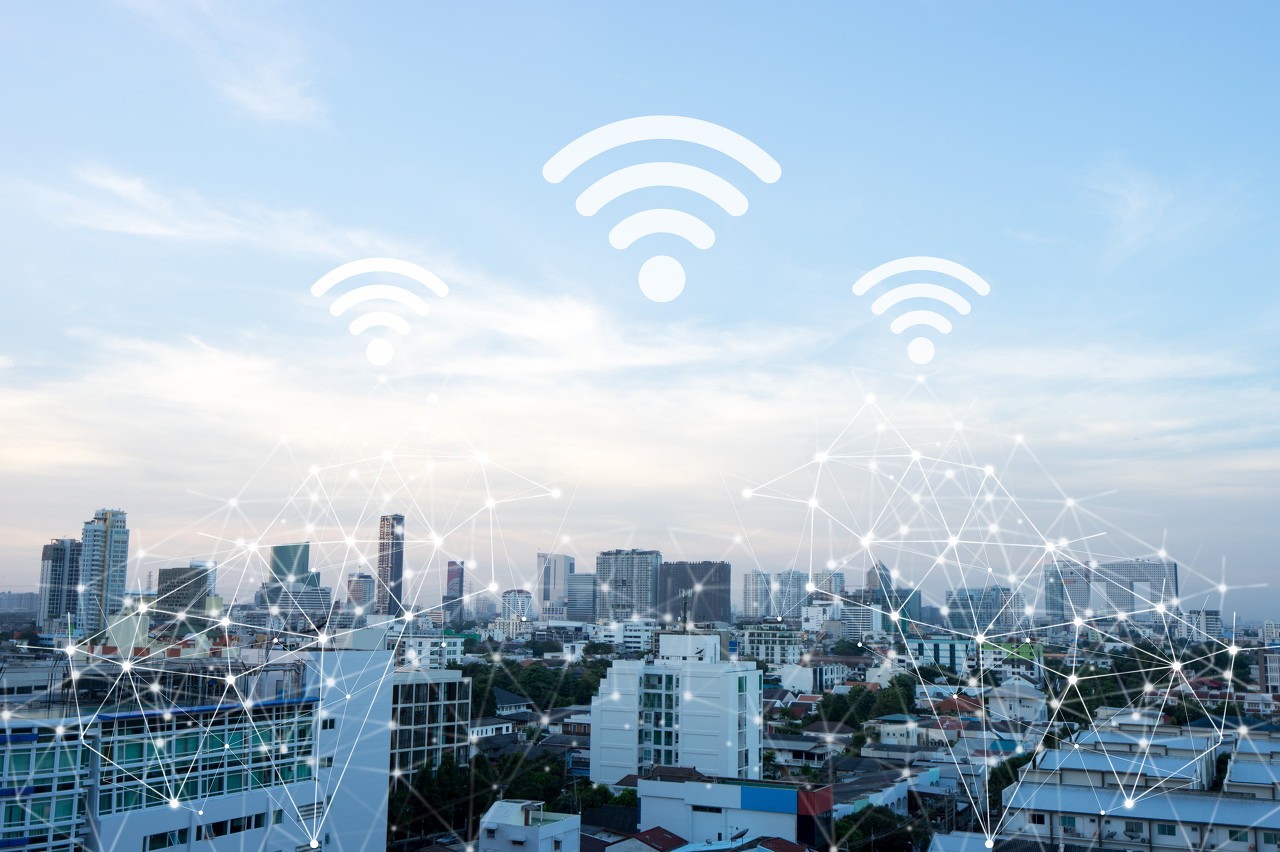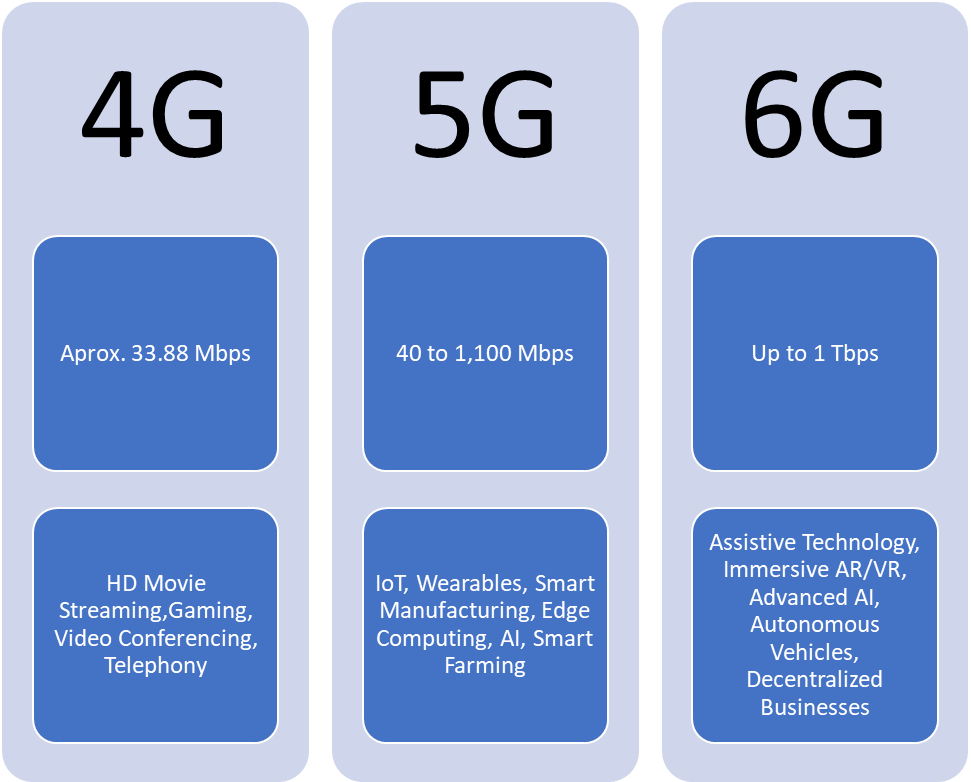What is 6G and the future of wireless?


While 5G is still being rolled out to replace the aging 4G standard, its successor, 6G, is already in development. Like its predecessor, 6G networks are expected to be faster and handle increased bandwidth with lower latency.
6G networks are expected to offer more diverse capabilities than their predecessors and are more likely to support applications beyond current mobile applications, such as virtual and augmented reality (VR/AR), artificial intelligence and the Internet of Things (IoT). It is also speculated that mobile network operators will adopt a flexible, decentralized 6G model, including local spectrum licensing, spectrum sharing and infrastructure sharing. All of this will be handled through intelligent automated management based on mobile edge computing, short packet communication and blockchain technology.
New wireless communication standards are developed roughly every ten years, and 6G is expected to kick in around 2030. For now, nothing is set in stone when it comes to 6G, and even its name could be replaced by something else. With that in mind, there are some theoretical aspects to 6G, and what it might offer when it is eventually deployed. As 5G rolls out, consumers will continue to use more mobile devices and consume internet data at increasing speeds.
While telecoms still rely on 4G for consumer use, 5G is replacing the aging technology, albeit very slowly, with most deployments in densely populated cities. Introduced in 2009, the 4G/LTE standard changed the game for mobile devices as it increased data speeds and allowed users to stream HD movies, play games and transfer large amounts of data at around 33 Mbps.
5G
It surpasses the capabilities of 4G by leveraging microwave and millimeter wave technology to increase its speed to about 900 Mbps or more.
These higher speeds and bandwidths rival commercial broadband providers, allowing more applications to go beyond media streaming. IoT and connected devices will have real-time sensing capabilities.
Edge computing can take advantage of the cloud and access data immediately. Healthcare providers can gain instant knowledge from patients wearing medical devices. 5G offers applications in retail, industry, agriculture and manufacturing.
The list is almost endless, but it will be a while before we see the true potential of 5G before the new technology is deployed globally.

Significant differences between each criterion, including speed and application. (Credit Cabe Atwell)
6G technology
As mentioned above, 6G is still in the development stage and no factual information about its technology or capabilities is available. It is speculated that most telcos will adopt flexible, decentralized business models, with local spectrum licensing/sharing and infrastructure sharing similar to 5G. According to a 2019 paper from Virginia Tech, engineers describe 6G as a fully integrated Internet-based system that provides instant communication between users, devices, vehicles and the surrounding environment. Imagine, from the Internet of Things to the Internet of Everything, this is what 6G can theoretically provide.
Some experts believe that 6G can reach speeds of up to 1 Tbps, a thousand times faster than the 1 Gbps that current fiber packages can deliver. The U.S. Federal Communications Commission (FCC) opened up the prospect of 6G speeds in 2019, allowing companies to experiment with terahertz waves (AKA submillimeter waves) that fall into the 95 GHz to 3 THz spectrum. In contrast, 5G uses low-band, mid-band or high-band millimeter wave (mmWave) and microwave technology to achieve a frequency range of 24 GHz to 40. While terahertz waves could boost 6G speeds into the 1 Tbps range, it would suffer from the same limitations as 5G because of its limited range and the need for a "line of sight" between the transmitter and the end user.
Engineers at the University of California, Santa Barbara have designed a device that can help speed up the 6G development process using N-Polar gallium nitride high electron mobility transistors (HEMTs). These HEMTs combine a junction between two materials with different band gaps that act as channels instead of the doped regions commonly found in MOSFETs. Therefore, HEMT allows devices to operate at higher frequencies (140THz to 230 THz), just like the frequencies required for 6G.
Last year, researchers at Nanyang Technological University in Singapore and Osaka University in Japan designed a terahertz wave chip that could be used for 6G. Earlier this year, engineers at Millimeter Wave Products developed an amplifier for the G-band that operates in terahertz waves. These are some of the tools that can help 6G achieve and move beyond the research phase. Given the slow pace of 5G deployment, it could take a decade or more for 6G to become a reality.
Potential applications for 6G
Knowing the capabilities of 6G is not easy at this stage, but if it is deployed like the previous standard, the impact could be huge. Self-driving cars, drones, smart factories and artificial intelligence have gained a lot of attention during the rise of 5G. Some experts believe that 6G could advance these applications even further, and even allow artificial intelligence to stay coordinated and run smoothly. Self-driving cars may leverage collaborative AI to talk to others for navigation, pedestrian/object avoidance, and traffic updates. AI and edge computing can also enable devices such as traffic and street lights to act as network antennas in surrounding areas, enabling vehicles and people to stay connected to Wi-Fi.
VR and AR may become more immersive. Imagine feeling tangible cellular surfaces and objects through connected implants or even wireless human/computer interfaces. A 2019 white paper from Virginia Tech describes smartphones will eventually be phased out in favor of wearables, headsets/glasses and multi-sensory extended reality (XR) implants. Others envision a complete fusion of cyberspace and physical reality. Imagine thinking about any given topic, then having access to data stored in the cloud for more information - the ultimate cheating tool for students.
Of course, these potential applications are speculative, as 6G research is still in its infancy, and 5G is still years away from full deployment. The internet may even need to be redesigned to support 6G. In some cases, all of these devices require constant power, relying on batteries and a stable connection to the grid. All of this manufacturing and energy use can also be damaging to ecosystems unless they can be linked to sustainable energy. That being said, 6G certainly brings more than its predecessors, at least in speculative theory, but it would be an exciting prospect if any of these applications materialize.